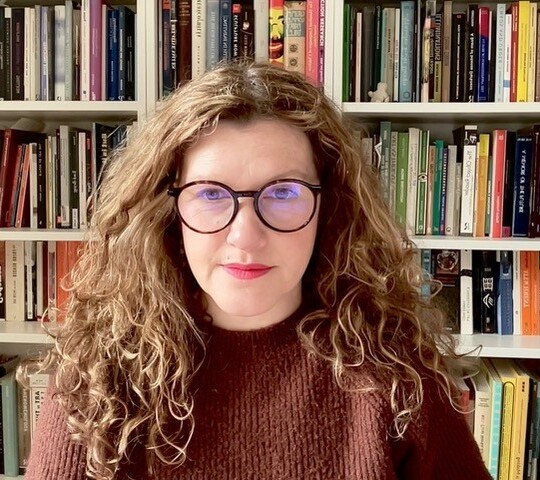Kimberley Foster’s practice research explores approaches to learning experiences in the museum that are predicated on embodied encounters with pedagogical art objects. These objects have developed from her sculptural practice (www.sorhed.com) and are made to be handled, physically encountered, with the specific intent of disrupting conventional ways of knowing. The objects provocation is to find new material points of entry into a dialogue with collections and exhibits, to ‘[…] learn from the museum beyond what it sets out to teach us […]’ (Rogoff, 2008). This is beyond what we should know and towards what we might want to find out or imagine. Held in our hands, the matter, form, and weight of these pedagogical art objects can interrupt habitual perception and present challenges to established institutional knowledge hierarchies. Foster’s practice explores how a different material approach, tethered to a specifically tuned art object, can engage previously unheard voices, and extend the museum experience to wider communities.
Within her Cambridge Visual Culture Research Fellowship residency, Foster will connect her practice research with the Fitzwilliam Museum, and the wider research community of Cambridge University, focusing on the site of the museum as a place in which new knowledges can be constructed by the visitor / learner. A space where matter is both sedimented and known, and yet has the potential to be levered open and mobilised for those who connect to it (Barad, 2007). The Fellowship will extend the scope of her PhD practice research, which explored the potential of a prosthetic art pedagogy (Garoian, 2013). This approach to research drives the learner beyond the conventions of dialectic thinking towards a disequilibrium, in which messy entanglements with materiality create an extension to the habitual ways of knowing or encountering learning.
Foster will question how aspects of intangible touch have the potential to become tangible through a prosthetic encounter with pedagogical art objects. Whilst deliberate touch is more generally associated with our hands and our fingers, she questions how reaching-out towards an exhibited work (metaphorically and by handling other objects) can be consciously seeking-out a new form of engagement, an alternative way of experiencing and touching the museum. In the Fitzwilliam’s 2021 ‘Human Touch’ exhibition, touch was identified as ‘how we leave our mark and find our place in the world; touch is how we connect.’ After visiting the exhibition Foster was interested in how this could be extended and directly applied to the way that pedagogical art objects can enable learners to leave their mark and find their place in the museum. Touching materials and grasping new ideas can enable more embodied encounters within the museum, opening up spaces for more marginalised knowledges.
Responding to Merleau Ponty’s (1945) ideas of how we can intensify our ways of perceiving in the (art) museum, Hubert Dreyfus suggests that ‘without our embodied ability to grasp meaning, relevance slips through our non-existent fingers’ (1998, p.11). Foster explores how, with specifically crafted pedagogical art objects in our hands, new modes of critical engagement in the museum can materialise? If we literally hold onto ideas through an alternative interpretative engagement, can the matter of these objects (when considered in proximity to exhibited objects and artworks) potentially interrupt habitual perception and extend visual literacies towards new ways of looking and encountering material culture? A move away from familiar trajectories of understanding towards less stable and more subjective diverse ways of knowing.
Image: K.Foster (2018) Grip.



